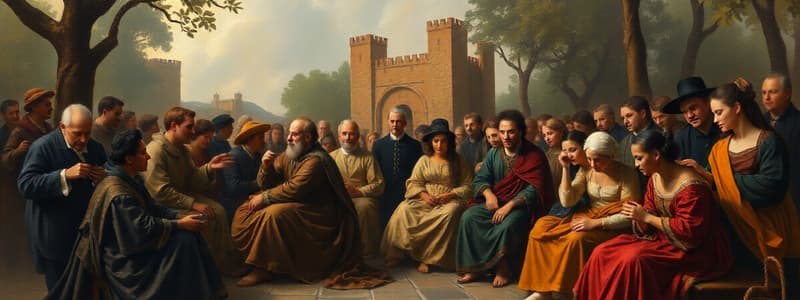Podcast
Questions and Answers
What is highlighted as surprising in the text?
What is highlighted as surprising in the text?
- The level of engagement in political matters
- The frequency of political discussions
- The number of people knowledgeable about politics
- The lack of awareness of political similarities (correct)
Which aspect of public perception is discussed?
Which aspect of public perception is discussed?
- The common belief in political differences (correct)
- The general apathy towards political issues
- People's tendency to ignore historical events
- The widespread concern about the political landscape
What might be inferred about public awareness from the content?
What might be inferred about public awareness from the content?
- Public awareness of political issues is quite high
- There is insufficient attention paid to political matters (correct)
- There is significant public debate on politics
- Many people actively seek political information
Which of the following is suggested about political discussions?
Which of the following is suggested about political discussions?
What theme is evident regarding the perception of caste and politics?
What theme is evident regarding the perception of caste and politics?
Flashcards
Caste System
Caste System
A social hierarchy system based on birth.
Political implications
Political implications
The effects of the caste system on political life and decisions.
Remarkable insight
Remarkable insight
An unexpected or significant observation.
Similar politics
Similar politics
Signup and view all the flashcards
Hardly anyone
Hardly anyone
Signup and view all the flashcards
Study Notes
The Rebirth of Caste
- Slavery's legacy continues in a modern caste system
- The Emancipation Proclamation was ineffective, leaving many Black people effectively enslaved in new ways
- Jim Crow laws created a system of segregation and oppression
- Black success does not diminish the existence of a caste system
- Racism adapts to maintain power structures: shifting tools and language
- Historical shifts reveal a pattern of backsliding towards racial hierarchy
- Planter elite used strategies like convict leasing and legal loopholes
- Racial caste systems in the US are designed, not inevitable
- The US Constitution was built upon a compromise to protect slavery
- The method of determining political representation and presidential elections protected the interests of slaveholders
- Slaves were considered three-fifths of a person in the Constitution
The Birth of Slavery
- Race is a relatively recent concept, emerging from colonialism
- In early America, there was a mixture of indentured servants and enslaved people, treated poorly and without distinction
- Chattel slavery became the dominant form of labor, promoted through the idea of racial difference
- American Indians were targeted for elimination to expand land access
- Planters sought enslaved people to make up for labor demands, and enslaved people were disproportionately African
- Strategies like the Bacon's Rebellion shaped the development of a racial caste system
- Planters created a racial divide to consolidate power and protect privilege
- The political system catered to the needs of wealthy whites, and the need to preserve slavery
- Concepts of race justified the enslavement and oppression of people of color and expansion of land
- The concept of race emerged as a way to reconcile slavery and the ideals of freedom.
Studying That Suits You
Use AI to generate personalized quizzes and flashcards to suit your learning preferences.




